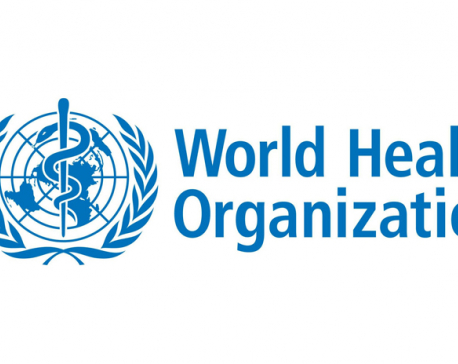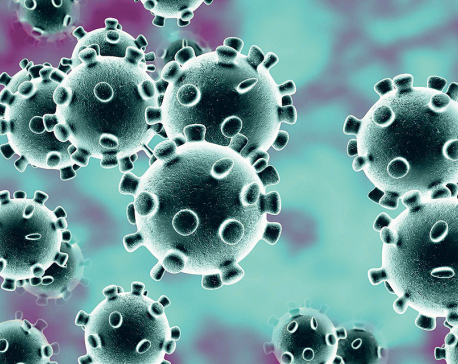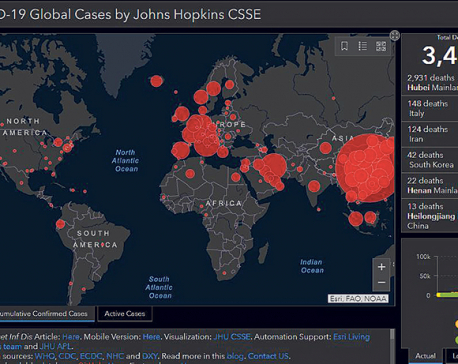
OR

More from Author
COVID-19 could end up becoming the plague of our times. If collective actions are not taken, it will pose a serious threat to global health
People across the world were planning and preparing to welcome and celebrate New Year. Following the detection of several respiratory illness cases, the World Health Organization (WHO) confirmed the first case of COVID-19 on 31 December 2019 in Wuhan city of China. This not only altered the plans and programs of the New Year celebration across China but also posed threat to Chinese health system as the number of cases surged. Subsequently, considering the speed and spread of the virus, WHO on January 31, announced global emergency in the global health system.
COVID-19 has posed a threat to humans and every health system across the globe including in countries like the US, UK, Italy and South Korea. The degree of risk and challenge is understandably higher to the countries, where health system is comparatively weak. WHO has mentioned that every country is vulnerable to COVID-19.
The situation has clearly indicated that the world has reached critical juncture in the history of global public health. Everyone seems clueless about the direction of this alarming situation. This has sparked fear, debate, discussion, engagement, and collaboration among key players, scientific communities at multiple levels forging the ways to contain the virus and saving lives. COVID-19 has now been declared a global pandemic. It has already affected over 100000 people and over 100 countries. The impact has not stopped.
The WHO has called for every country to be prepared. This has created pressure on the health systems in low and middle-income countries (LMICs) to tackle the critical situation by strengthening all aspects.
Challenge for Nepal
Nepal is facing a challenge not only due to its geographical proximity with the epicenter of COVID-19 outbreak, but also because WHO ranks it as a high-risk zone. But our public health system is not well equipped. However, Nepal has taken some welcome steps recently. Ministry of Health and Population is developing key response and preparedness plan from federal to local level. Screening at Tribhuvan International Airport (TIA) and other entry points has increased. Nepal has also temporarily suspended ‘on-arrival visas’ for citizens of countries including China, South Korea, Japan, Iran and Italy.
Awareness programs have increased. Hotline services are also in place to provide information. At the provincial level, health desks are operational at the main land borders crossing with China and India.
All countries, communities, and individuals are engaging and focusing on response and preventive measures. In doing so, they are also manufacturing facts regarding COVID-19 transmission and prevention. These contents are shared and communicated through social media platforms. This has not only created the debate but also led to distortion of facts, giving rise to infodemic—fake news and misconceptions not based on science and facts. There is a real danger of people being completely misinformed. People may not follow legitimate public health advice. The impact would be graver in a country like ours where people tend to take things for granted. For example, people are not seen to follow basic respiratory hygiene exercise such as covering mouth and nose with their bent elbow or tissue when they cough or sneeze. Preventive and promotional aspects of health are least prioritized. This will add to the challenge during the global emergency.
Realizing the possible adverse impact of infodemics, WHO has already started collaborating with social media platforms such as Facebook, Twitter, and TikTok to remove false claims or rumors and direct the users to WHO web portal for valid and reliable information. Anticipating the dangerous impact of infodemic, WHO recently announced: “We are not just fighting an epidemic, we are fighting an infodemic.”
Accurate and factual information is the need of the hour to save people and to stop misconceptions and rumors from spreading further. Some are claiming that eating garlic can help prevent infection while there is no evidence of eating garlic protecting people from the virus. Such misinformation could make the situation worse.
Accurate information and people’s access is a key for the prevention and promotion of health during the global outbreak. The reliability and validity of the information/evidence/knowledge are closely linked with the source and the system at large, along with other compounding factors.
COVID-19 is impacting every sector. Thus containing the situation requires multi-sectoral collaboration and interdisciplinary approaches. The health system alone cannot fight the situation.
Learn from history
Affected countries should look to past victories and failures. They can draw lessons from how SARS outbreak started and how it was contained. Maintaining cleanliness, isolating contaminated people, distancing from people with fever and flu, along with increased epidemiologic surveillance and monitoring can help. These effective measures need to be taken into account to avoid the unpredictable risks of this pandemic.
COVID-19 has not only created unprecedented pressure on the health system of Nepal and the world but also has opened the window of opportunity to work collaboratively and collectively within and beyond the borders for containing the virus and saving people. Viruses could not only pose a threat to national security and humanity but also bring global unity to fight against the global health crisis. If we fail to learn from the past, we might have to face the consequences. COVID-19 could end up becoming the plague of our times. If collective actions are not taken, it will pose a serious threat to global health.
Authors are associated with HERD International, a research and development institute based in Kathmandu
You May Like This

Rapid Diagnostic Test not reliable: WHO Nepal Office
KATHMANDU, April 7: As Nepal braces for employing Rapid Diagnostic Test (RDT) kits to detect Covid-19 cases in three districts,... Read More...

Pandemic perceptions
The coronavirus pandemic has become the topic of possibly all conversations, be it at the dinner table, the office or... Read More...

Inside Nepal’s preparations against possible COVID-19 outbreak
KATHMANDU, March 7: During a daily press briefing on Feb 28, the director general of the World Health Organization (WHO),... Read More...




Just In
- MoHP cautions docs working in govt hospitals not to work in private ones
- Over 400,000 tourists visited Mustang by road last year
- 19 hydropower projects to be showcased at investment summit
- Global oil and gold prices surge as Israel retaliates against Iran
- Sajha Yatayat cancels CEO appointment process for lack of candidates
- Govt padlocks Nepal Scouts’ property illegally occupied by NC lawmaker Deepak Khadka
- FWEAN meets with President Paudel to solicit support for women entrepreneurship
- Koshi provincial assembly passes resolution motion calling for special session by majority votes








_20220508065243.jpg)






Leave A Comment